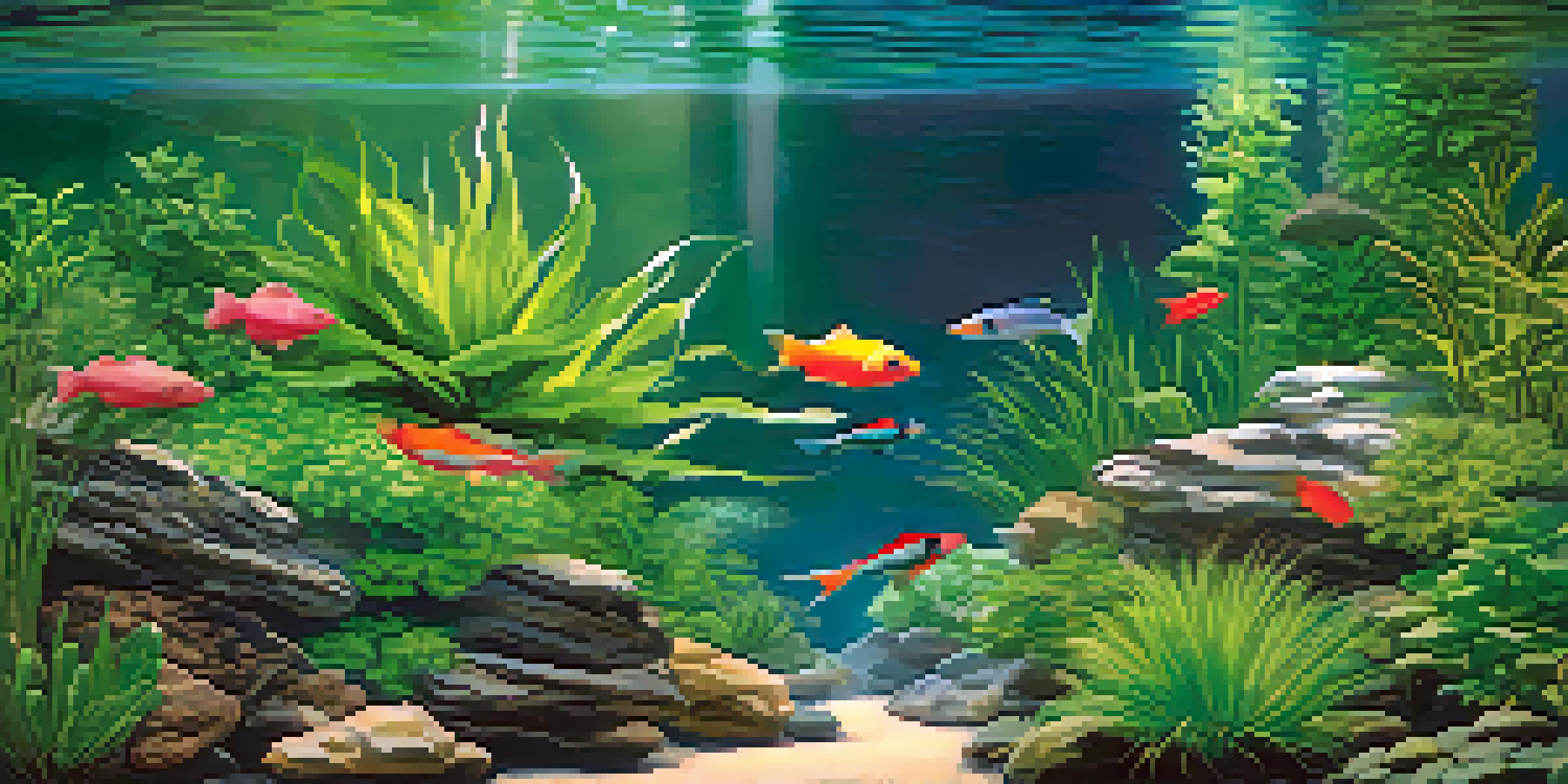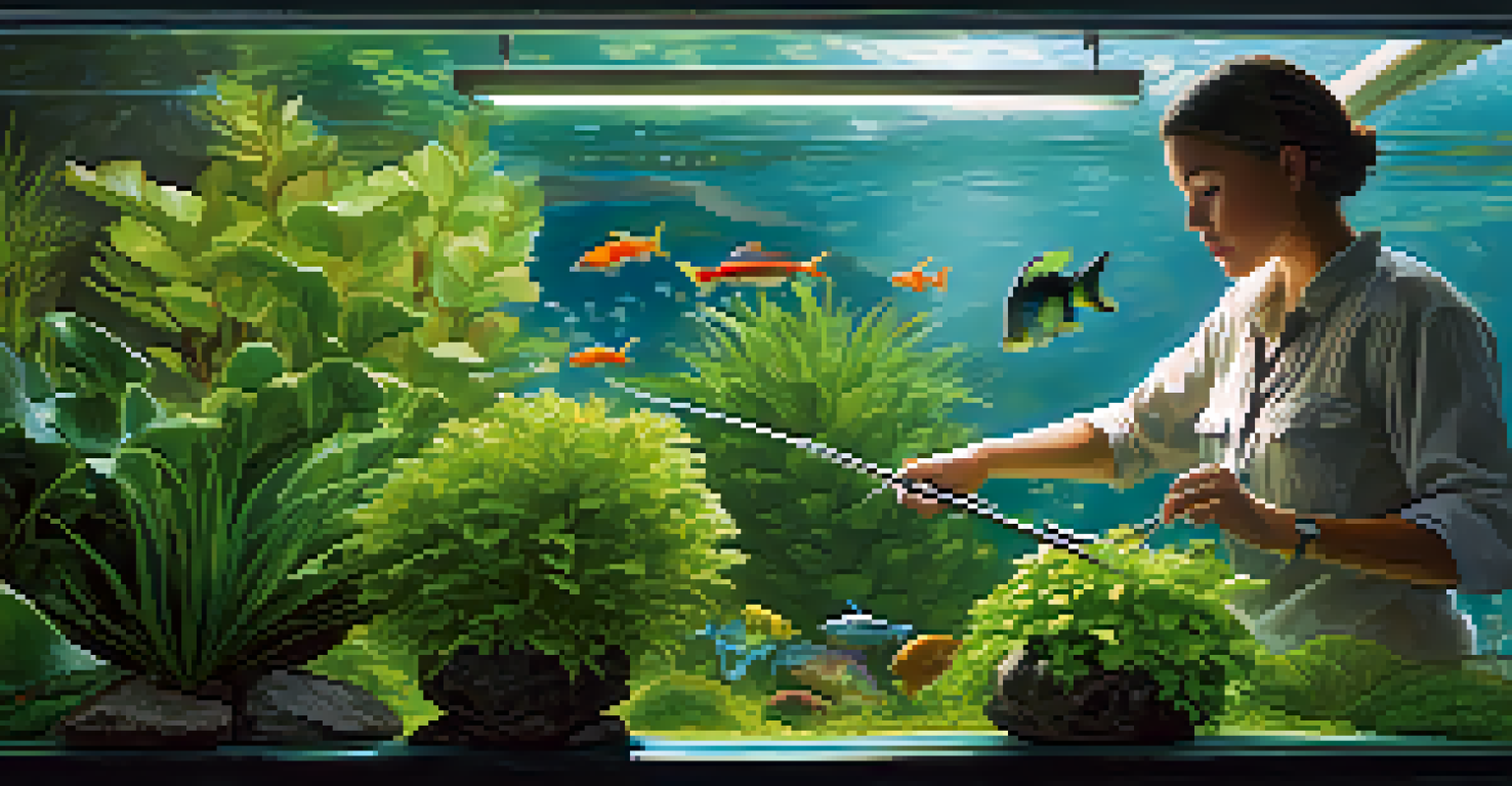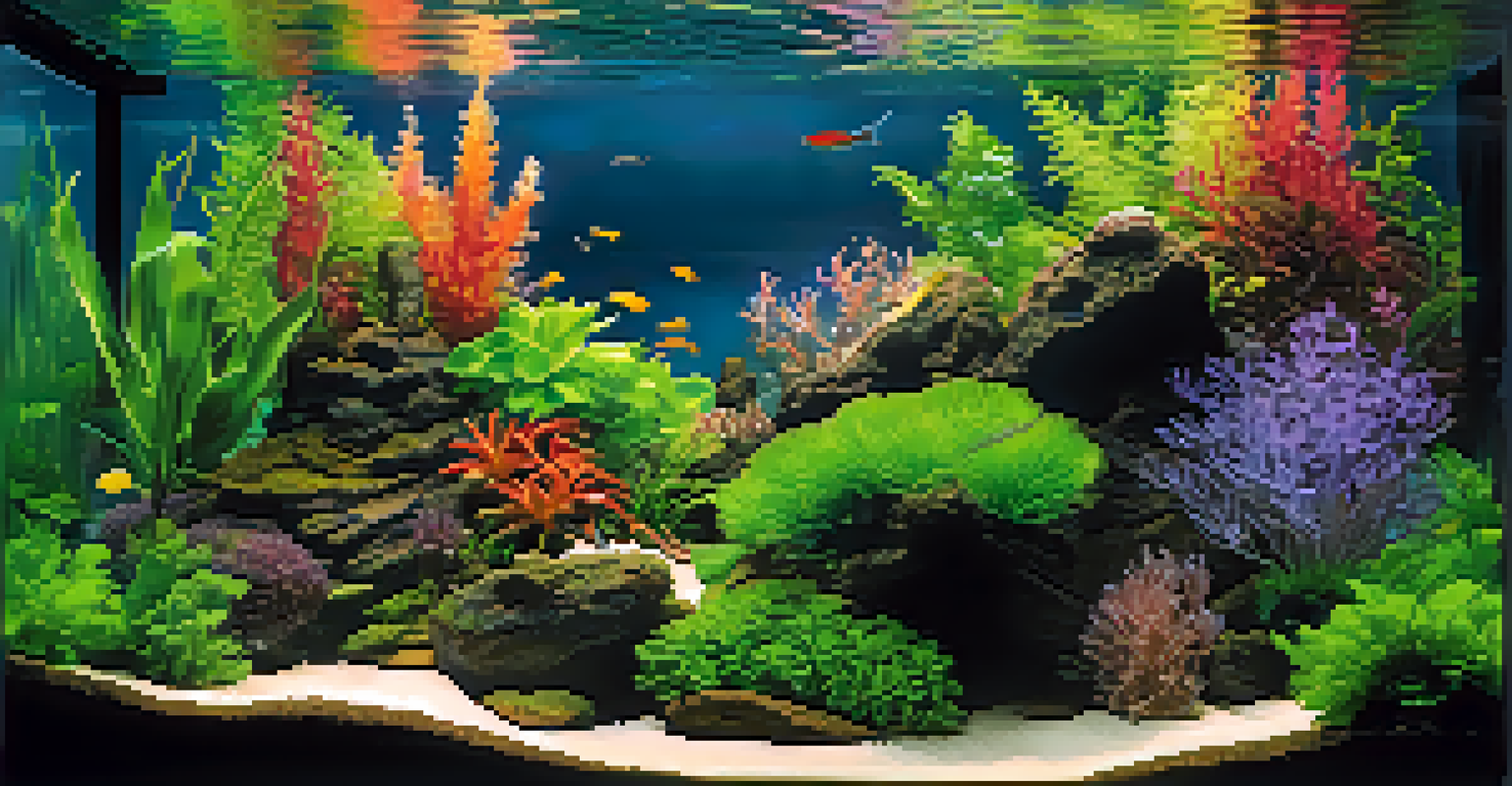Aquascaping Maintenance: Tips for Long-Lasting Beauty

Understanding the Basics of Aquascaping Maintenance
Aquascaping combines art and science, creating stunning underwater landscapes. To maintain these beautiful setups, it's crucial to understand the basics of upkeep. Regular attention to your aquascape can prevent problems and ensure that your aquatic plants and fish thrive.
Aquascaping is not about the end result, but the journey of creating and maintaining a beautiful underwater world.
The foundation of aquascaping maintenance lies in your routine care. This includes monitoring water quality, trimming plants, and cleaning the substrate. By establishing a consistent schedule, you can keep your aquascape looking pristine and vibrant.
Think of it like tending to a garden; just as plants need sunlight and water, your aquascape requires a balanced environment. Embracing this mindset can help you stay committed to regular maintenance, ensuring your aquatic paradise remains beautiful.
The Importance of Regular Water Testing
Regular water testing is a cornerstone of successful aquascaping. By monitoring parameters like pH, ammonia, and nitrate levels, you can catch potential issues before they escalate. It's similar to checking the temperature before going for a swim—ensuring a safe and enjoyable environment.

Investing in a quality water testing kit will pay off in the long run. Make it a habit to test your water weekly, especially in the early stages of your aquascape. This proactive approach helps you maintain optimal conditions and keeps your aquatic life healthy.
Regular Maintenance is Key
Consistent upkeep of your aquascape, including water testing and plant pruning, ensures a vibrant and healthy underwater environment.
If you notice fluctuations in water quality, don’t panic! Adjusting your maintenance routine and identifying the root cause can help you restore balance. Your diligence will ensure a thriving ecosystem that showcases your aquascaping skills.
Pruning and Trimming Your Aquatic Plants
Just like a bonsai tree needs regular trimming, your aquatic plants require attention too. Pruning helps maintain the shape of your aquascape while promoting healthy growth. It’s also a great way to encourage light penetration for lower plants, ensuring they flourish.
The beauty of aquascaping lies in the balance of nature and the art of design.
Aim to trim plants every few weeks, depending on their growth rate. Remove dead or yellowing leaves, and don’t hesitate to cut back overgrown stems. This will not only enhance aesthetics but also prevent decay that can pollute your water.
Think of your aquascape as a living piece of art—regular maintenance allows you to sculpt and refine it over time. With each trim, you’re investing in the longevity and beauty of your underwater masterpiece.
Cleaning the Aquarium: Best Practices
Cleaning your aquarium is essential for maintaining a healthy aquascape. Regularly removing algae and debris from the glass and substrate will enhance visibility and prevent buildup. It’s like spring cleaning for your underwater world, ensuring everything stays fresh and vibrant.
Use a soft sponge or algae scraper to clean the glass without scratching it. For the substrate, a gravel vacuum can help remove detritus while minimizing disruption to the aquatic life. Cleaning should be done gently, as sudden changes can stress your fish and plants.
Lighting and Fertilization Matter
Proper lighting and balanced fertilization are crucial for promoting healthy growth of aquatic plants and preventing algae blooms.
Aim to perform a thorough clean every two weeks, with spot cleaning in between as needed. Remember, a clean aquarium not only looks better but also provides a healthier environment for your aquatic inhabitants.
Maintaining Proper Lighting for Your Aquascape
Lighting plays a crucial role in the health of your aquatic plants. Each species has its own lighting needs, so understanding these requirements is key to thriving plants. Too much light can lead to algae growth, while too little can stunt plant growth, creating a delicate balance.
Consider using a timer to regulate your aquarium lighting, aiming for about 8-10 hours of light daily. This simulates natural conditions and helps plants photosynthesize effectively. Just like us, plants thrive on routine, and consistency is vital.
Be observant of your plants’ responses to light. If you notice excessive algae or leggy growth in your plants, it may be time to adjust your lighting setup. Regularly assessing and tweaking your lighting will ensure your aquascape remains a flourishing haven.
Fertilization Techniques for Healthy Growth
Fertilization is an essential part of aquascaping maintenance that often gets overlooked. Just like soil in a garden, your aquatic plants need the right nutrients to thrive. A well-balanced approach to fertilization can lead to vibrant colors and robust growth.
Consider using both liquid and solid fertilizers, depending on your plants’ needs. Liquid fertilizers can be applied during water changes, while root tabs can provide nutrients directly to the plant roots. Finding the right balance will depend on your specific aquascaping setup.
Monitor Fish Health Regularly
Regular observation of your fish and invertebrates helps catch any signs of stress or illness early, maintaining a harmonious ecosystem.
Be cautious not to over-fertilize, as this can lead to algae blooms—an unwanted guest in your underwater paradise. Regularly observe your plants and adjust your fertilization strategy to keep them healthy and happy.
Managing Fish and Invertebrate Health
Healthy fish and invertebrates are vital for a thriving aquascape. Regularly observing your aquatic life can help you spot any signs of stress or illness early. Just as a gardener checks plants for pests, keeping an eye on your fish will ensure a harmonious ecosystem.
Ensure that your fish are compatible with each other and that their needs align with the plants in your aquascape. For instance, some fish may nibble on plants, so selecting species that coexist peacefully is essential. This careful selection creates a balanced environment.

Conduct routine checks on your fish for any signs of illness, such as unusual behavior or physical abnormalities. Prompt action can often prevent minor issues from escalating, ensuring your aquatic community remains vibrant and healthy.
Creating a Long-Term Maintenance Plan
Developing a long-term maintenance plan is key to sustaining the beauty of your aquascape. Start by scheduling regular tasks, such as water changes, plant trimming, and cleaning sessions. A well-structured plan makes maintenance less daunting and keeps your aquarium thriving.
Consider keeping a maintenance log to track your activities and observe patterns over time. This can help identify what works best for your specific setup, making adjustments easier. It’s like keeping a diary for your fish—documenting their journey and growth.
As you refine your maintenance routine, remember that patience is essential. Aquascaping is an art, and the beauty of your underwater landscape grows with care and dedication. Embrace the journey, and your aquascape will reward you with lasting beauty.